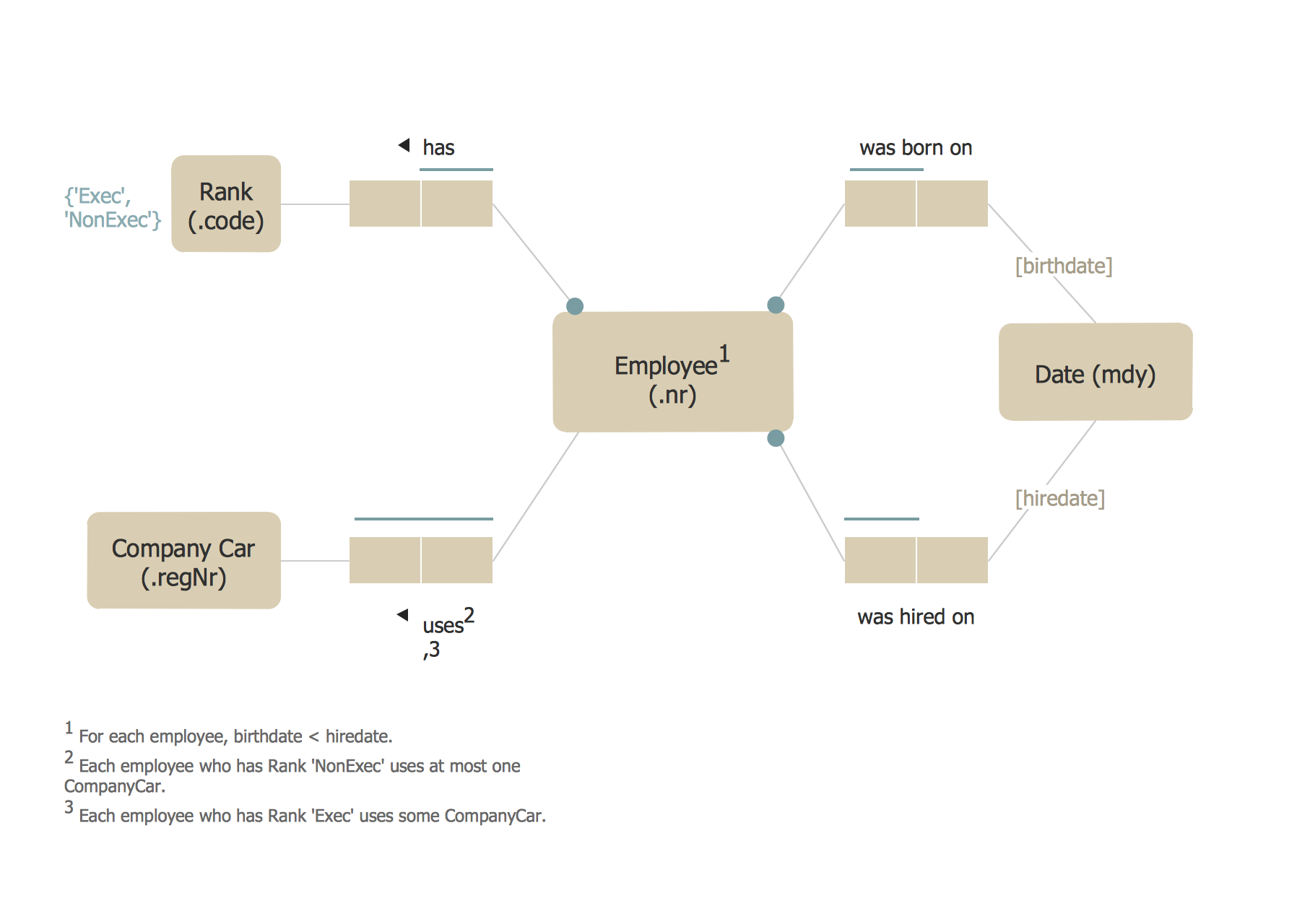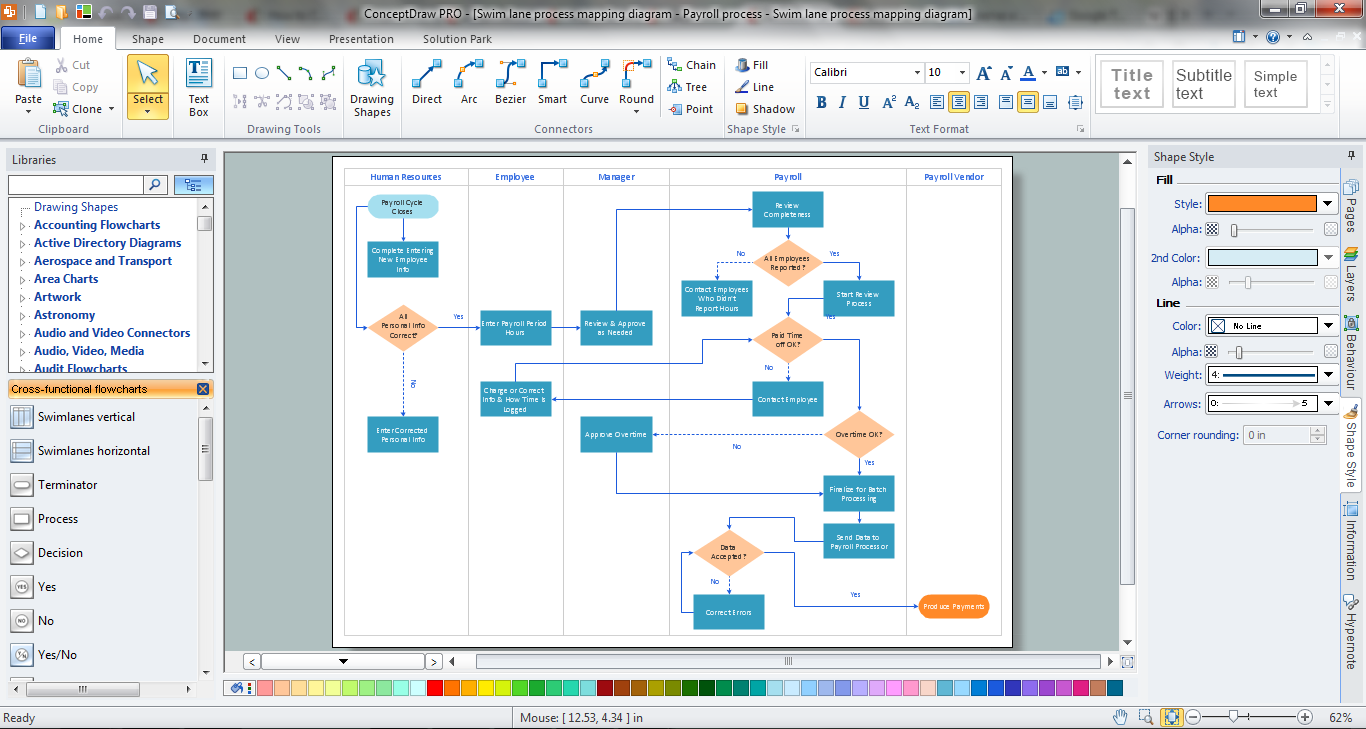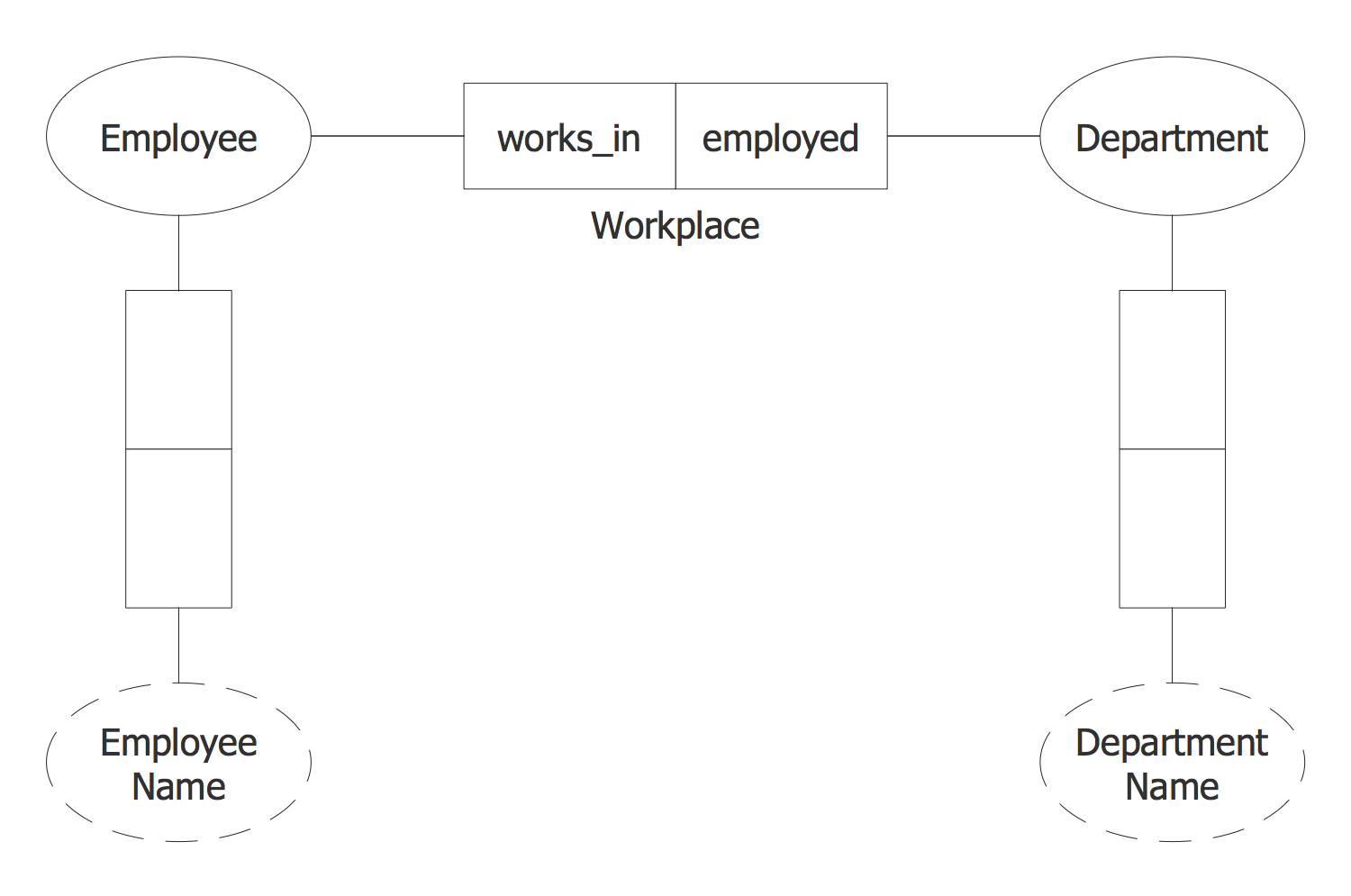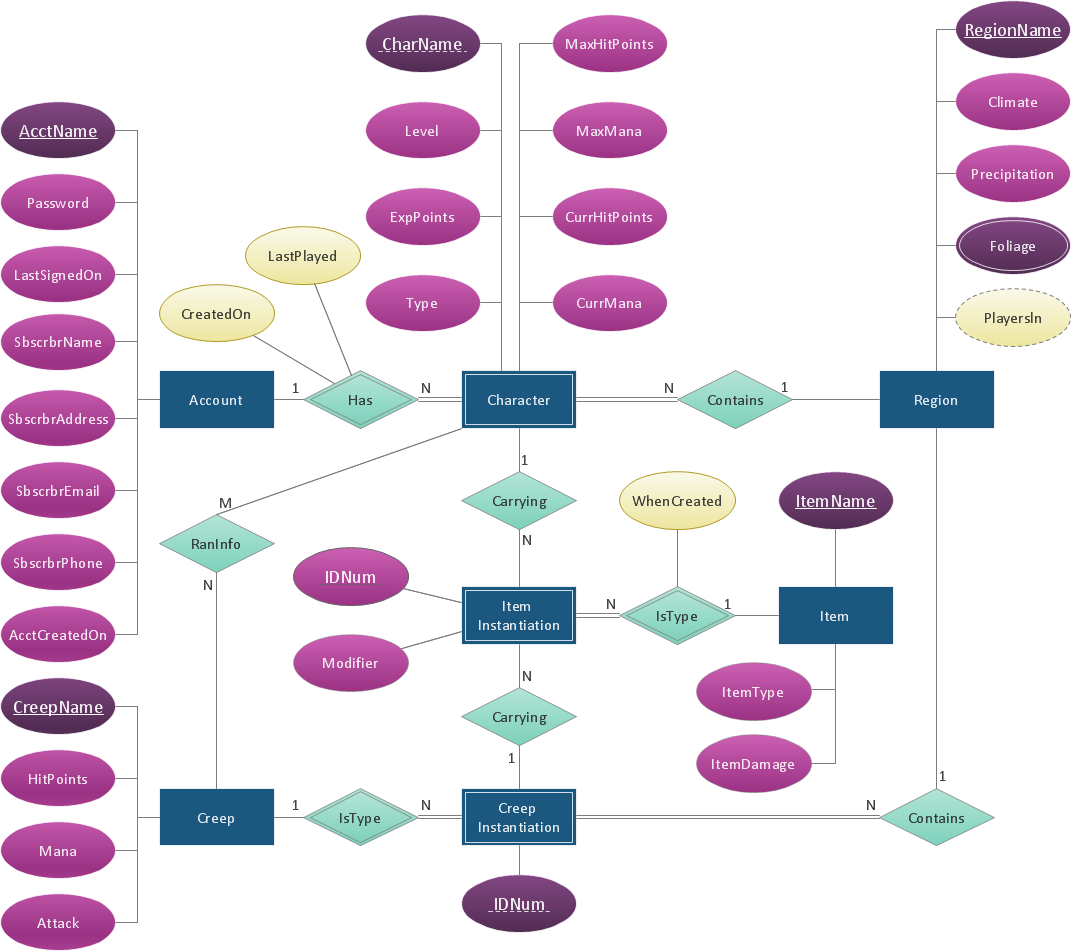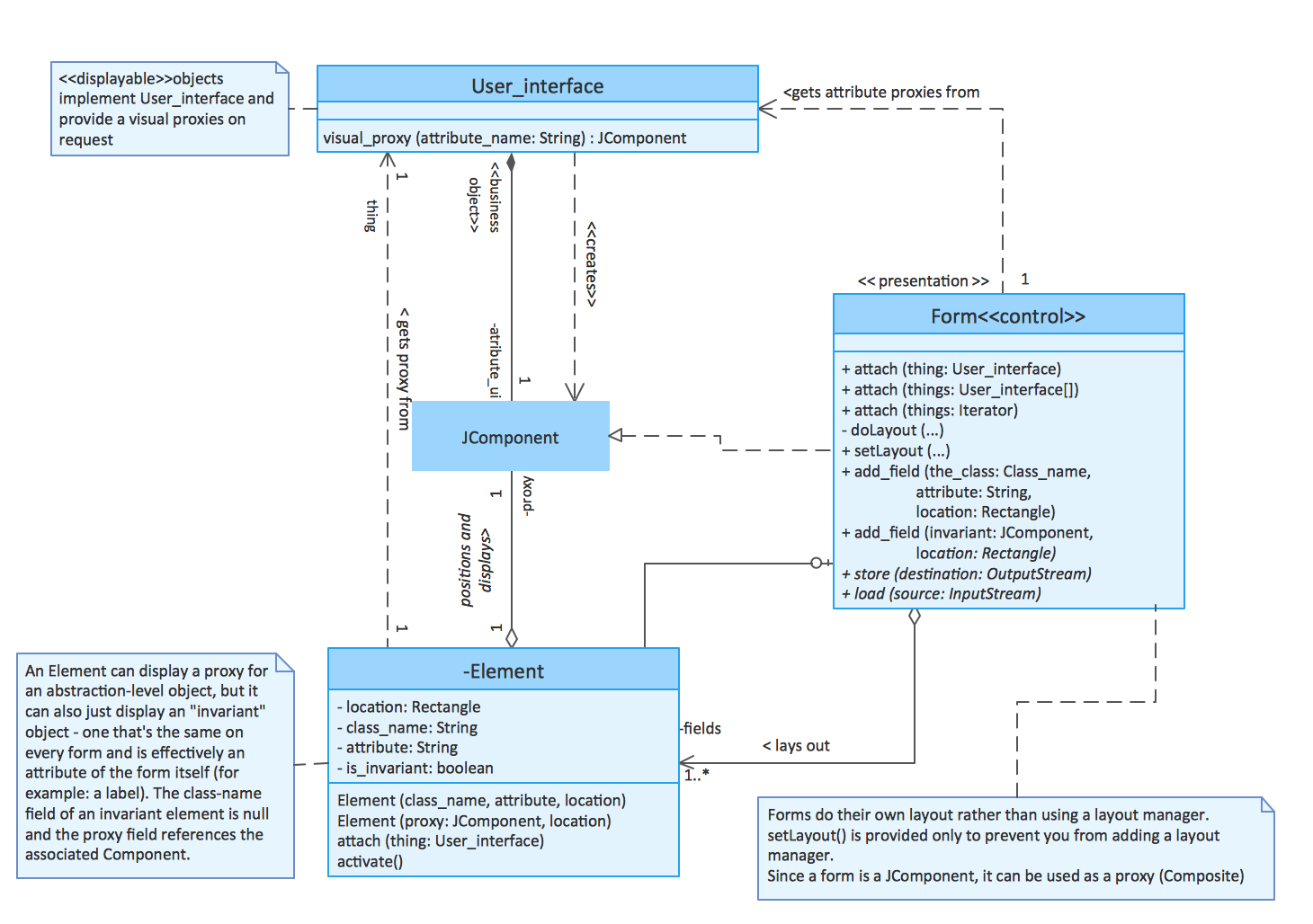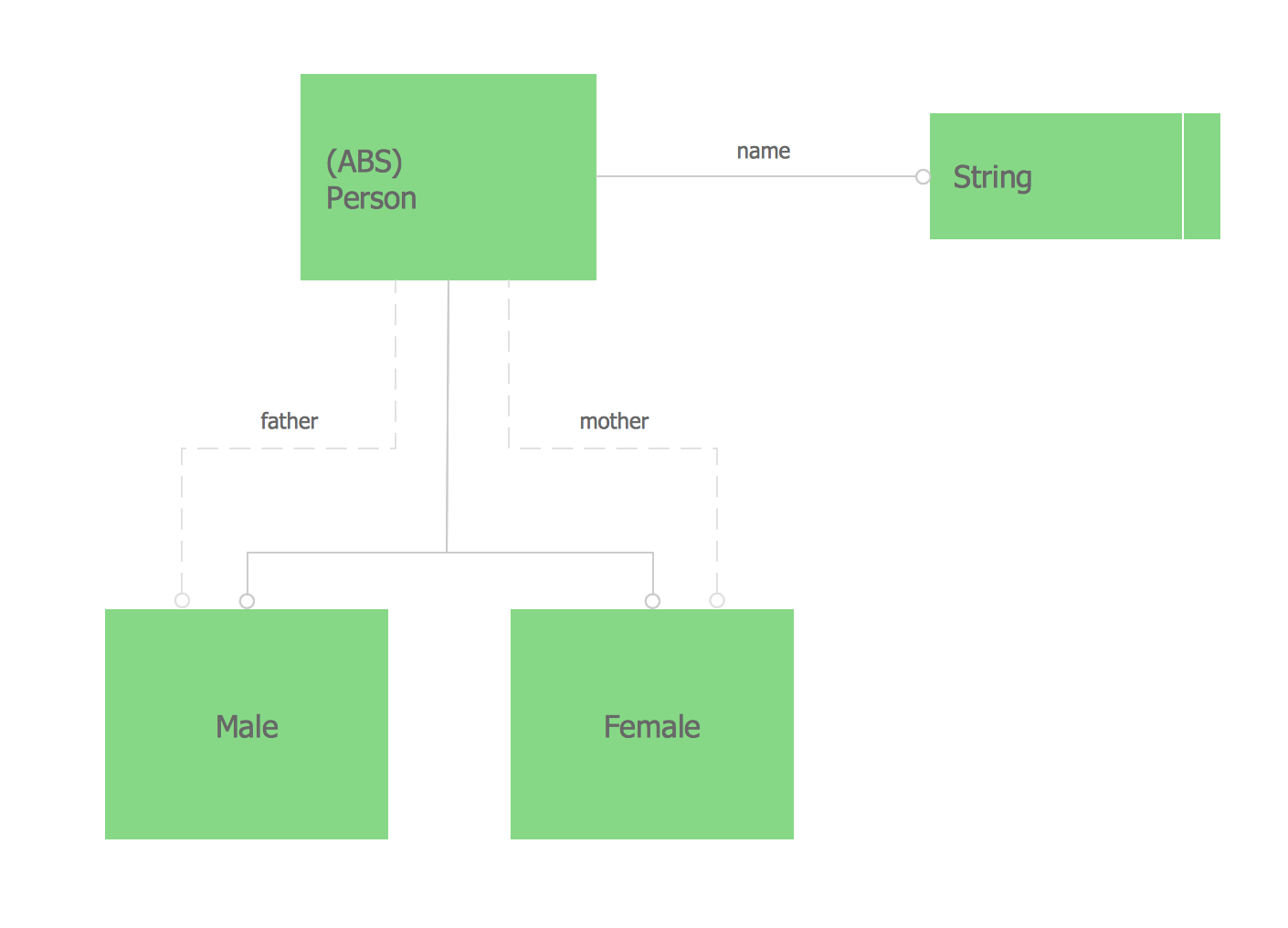ORM Diagram
The vector stencils library ORM Diagrams from the solution Software Development contains specific ORM symbols for ConceptDraw DIAGRAM diagramming and vector drawing software. The Software Development solution is contained in the ConceptDraw Solution Park.
 Object-Role Modeling (ORM) Diagrams
Object-Role Modeling (ORM) Diagrams
Object-role Modeling (ORM) Diagram solution with powerful vector diagramming and data modeling tools, large quantity of specially developed samples and examples, and rich variety of vector objects corresponding to common ORM notation, ideally suits for developing the comprehensive, clear and visual Object-role Modeling (ORM) diagrams and schematics, understandable for all interested people from the different fields and business directions, for designing the ORM models, and demonstrating advantages from the use of ORM and its notation. It is intended for software developers and computer engineers, specialists in a field of Object-oriented programming (OOP), database architects, web-application constructors and developers, etc.
The vector stencils library "ORM diagram" contains 32 object-role modeling (ORM) notation symbols.
Use it to design your ORM diagrams with ConceptDraw PRO software in data modeling and software engineering.
The vector stencils example "Design elements - ORM diagram" is included in ORM Diagrams solution from Software Development area of ConceptDraw Solution Park.
Use it to design your ORM diagrams with ConceptDraw PRO software in data modeling and software engineering.
The vector stencils example "Design elements - ORM diagram" is included in ORM Diagrams solution from Software Development area of ConceptDraw Solution Park.
Entity Relationship Diagram Symbols
The semantic modeling method nowadays is successfully applied in database structure design. It is effective method of modeling the data structures, which is based on the meaning of these data. As a tool of semantic modeling, there are used different types of Entity-Relationship Diagrams. Entity Relationship Diagram (ERD) is applied to visually and clearly represent a structure of a business database. The main components of ERDs are: entity, relation and attributes. An entity is a class of similar objects in the model, each entity is depicted in the form of rectangle and has the name expressed by a noun. Relation is shown in the form of non-directional line that connects two entities. There are several notation styles used for ERDs: information engineering style, Chen style, Bachman style, Martin Style. The Entity Relationship Diagram symbols used for professional ERD drawing are predesigned by professionals and collected in the libraries of the Entity-Relationship Diagram (ERD) solution for ConceptDraw DIAGRAM software.Cross Functional Flowchart
ConceptDraw DIAGRAM extended with Cross-Functional Flowcharts Solution from the Business Processes Area is the best software for quick and easy designing Cross Functional Flowchart of any complexity. Make sure in it right now!ORM
In case some ORM drawing has to be created, such as an ORM diagram, it can become possible once the ConceptDraw DIAGRAM diagramming and drawing software is downloaded from this site being used with another product of CSO — the ConceptDraw STORE. Having the last-mentioned application, you can choose to install the Object-Role Modeling (ORM) solution in order to make any needed ORM diagram by using the pre-made templates of such drawings as well as the vector stencil libraries from the mentioned solution.ConceptDraw DIAGRAM ER Diagram Tool
Entity-relationship model, also called ER-model, is the main tool of domain modeling on the stage of conceptual design. The modeling of domain data structures is based on the use of graphical tools - Entity-Relationship diagrams (ER-diagrams). The core concepts of ER-Diagram are entity, attribute and relationship. ER-diagram lets visually represent the entities, helps effectively document all properties of designed system and to detail the data storages. To represent the elements at ER-model are commonly used Chen’s notation and Crow’s foot notation, each has its pros and cons. The entity on ER-diagram is represented in the form of rectangle, which specifies its name. An attribute is a property of the entity and relationship is an interaction between the entities. The relationship between two entities is called binary, between more than two entities - ternary. Specific software, such as ConceptDraw DIAGRAM with Entity-Relationship Diagram (ERD) solution from ConceptDraw Solution Park is helpful for easy creation Entity-Relationship Diagrams.Software Diagram Examples and Templates
ConceptDraw Pro is a powerful tool for business and technical diagramming. Software Development area of ConceptDraw Solution Park provides 5 solutions: Data Flow Diagrams, Entity-Relationship Diagram (ERD), Graphic User Interface, IDEFO Diagrams, Rapid UML.Express-G Diagram
The vector stencils library from the solution Information Model Diagrams contains specific data type symbols of the EXPRESS-G notation such as entity data type symbols, simple data type symbols, enumeration data type symbols, defined data type symbols, select data type symbols and specific attribute symbols for ConceptDraw DIAGRAM diagramming and vector drawing software. The Information Model Diagrams solution is contained in the Software Development area of ConceptDraw Solution Park.This ORM diagram sample presents object-role model overview.
It was designed on the base of the Wikimedia Commons file: Object-Role Model Overview.jpg. [commons.wikimedia.org/ wiki/ File:Object-Role_ Model_ Overview.jpg]
"Object-role modeling (ORM) is used to model the semantics of a universe of discourse. ORM is often used for data modeling and software engineering.
An object-role model uses graphical symbols that are based on first order predicate logic and set theory to enable the modeler to create an unambiguous definition of an arbitrary universe of discourse. Attribute free, the predicates of an ORM Model lend themselves to the analysis and design of graph database models in as much as ORM was originally conceived to benefit relational database design. ...
More recently ORM has been used to model business rules, XML-Schemas, data warehouses, requirements engineering and web forms." [Object-role modeling. Wikipedia]
The ORM diagram example "Object-role model overview" was designed using ConceptDraw PRO software extended with ORM Diagrams solution from
Software Development area of ConceptDraw PRO Solution Park.
It was designed on the base of the Wikimedia Commons file: Object-Role Model Overview.jpg. [commons.wikimedia.org/ wiki/ File:Object-Role_ Model_ Overview.jpg]
"Object-role modeling (ORM) is used to model the semantics of a universe of discourse. ORM is often used for data modeling and software engineering.
An object-role model uses graphical symbols that are based on first order predicate logic and set theory to enable the modeler to create an unambiguous definition of an arbitrary universe of discourse. Attribute free, the predicates of an ORM Model lend themselves to the analysis and design of graph database models in as much as ORM was originally conceived to benefit relational database design. ...
More recently ORM has been used to model business rules, XML-Schemas, data warehouses, requirements engineering and web forms." [Object-role modeling. Wikipedia]
The ORM diagram example "Object-role model overview" was designed using ConceptDraw PRO software extended with ORM Diagrams solution from
Software Development area of ConceptDraw PRO Solution Park.
- Orm
- ORM Diagram | Process Flowchart | Basic Flowchart Symbols and ...
- ORM Diagram | Express-G Diagram | SSADM Diagram | Orm Diagram
- ORM Diagram | Software Diagrams | SSADM Diagram | Freeware To ...
- ORM Diagram | Flowchart | Swimlane Activity Diagram Visitor ...
- Entity Relationship Diagram Symbols | ORM Diagram | Attitude Type ...
- Design elements - HR department | ORM Diagram | Types Of ...
- ORM Diagram | Basic Diagramming | Orm Theory
- Process Flowchart | ORM Diagram | Illustration Software | Hire ...
- Flow chart Example. Warehouse Flowchart | ORM Diagram | Flow ...
